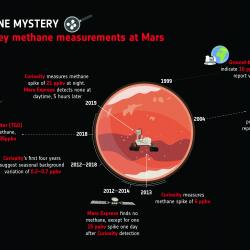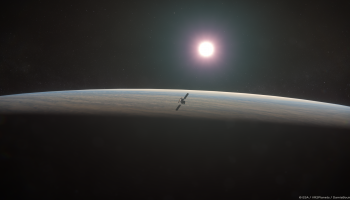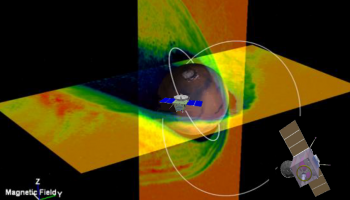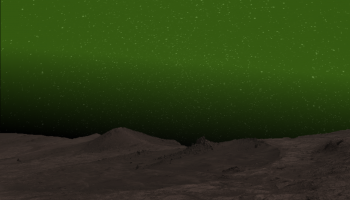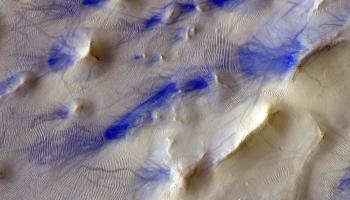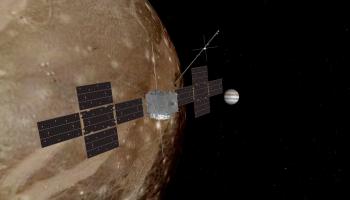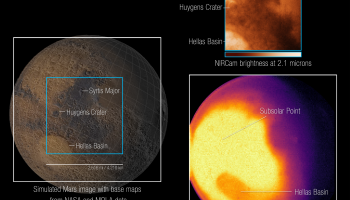ESA’s next mission to Venus was officially ‘adopted’ today by the Agency’s Science Programme Committee. EnVision will study Venus from its inner core to its outer atmosphere. BIRA-IASB will be on board with the VenSpec-H instrument.
ESA, the European Space Agency, has downselected the shortlist for its next ‘medium’ science mission to three finalists: M-Matisse, Plasma Observatory and Theseus. BIRA-IASB is involved in 2 out of the 3 selected candidates.
When future astronauts explore Mars’s poles, they will see a green glow lighting up the night sky. For the first time, a visible nightglow has been detected in the martian atmosphere by ESA’s ExoMars Trace Gas Orbiter (TGO) mission. Under clear skies, the glow could be bright enough for humans to see by and for rovers to navigate in the dark nights.
The ExoMars Trace Gas Orbiter (TGO) has revealed how oddly ‘light’ carbon monoxide forms in Mars’ atmosphere. The finding paints a better picture of how carbon-containing matter can be formed on the Red Planet without life, and helps clarify a puzzling discovery made by NASA’s Curiosity rover last year.
On 13 April 2023,the ESA spacecraft JUICE will take off on board an Ariane 5 launcher from ESA’s Spaceport in Kourou, French Guyana. After an 8-year-long journey, JUICE, an acronym for JUpiter ICy moons Explorer, will investigate Jupiter and its icy moons, with a special focus on Ganymede, the largest moon in the solar system.
The James Webb Space Telescope captured its first images and spectra of Mars on September 5, 2022. The telescope’s remarkable infrared sensitivity provides a unique perspective on our neighboring planet, complementing data collected by orbiters, rovers, and other telescopes.

